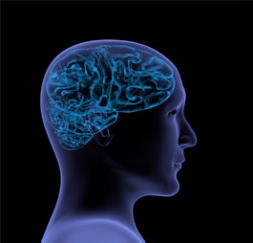FOR IMMEDIATE RELEASE
ACS News Service Weekly PressPac: April 03, 2013
Brain Activity Mapping Project aims to understand the brain
The scientific tools are not yet available to build a comprehensive map of the activity in the most complicated 3 pounds of material in the world — the human brain, scientists say in a newly published article. It describes the technologies that could be applied and developed for the Brain Activity Mapping (BAM) Project, which aims to do for the brain what the Human Genome Project did for genetics. Published in the journal ACS Nano, the article describes how BAM could bring new understanding of how the brain works and possibly lead to treatments of clinical depression, autism, schizophrenia, Parkinson’s and other brain diseases.
Three American Chemical Society journal editors, A. Paul Alivisatos, Anne M. Andrews and Paul S. Weiss, combine with Sotiris Masmanidis, Axel Scherer, Rafael Yuste, and several prominent nanoscientists and neuroscientists to explain that the human brain has eluded the kind of detailed understanding that exists for the heart, lungs and other organs. The reason lies in the brain’s complexity — with on the order of 80 billion neurons, 100 trillion synapses that interconnect those cells into networks and 100 neurotransmitters that carry signals across those synapses. Until now, scientists have been able to study the activities of only a handful of neurons at the same time — leaving gaps in knowledge as to how they interact to make thoughts and memories, or malfunction in brain diseases.
The article describes how advances in nanoscience and nanotechnology over the last decade are poised to develop the tools required for greater understanding of the brain at this important scale. Since the parts of the brain work at the nanoscale, such tools are ideally suited for probing the pieces, but must be put together to understand thought, perception, consciousness, and health and disease — which result from networking among thousands or hundreds of thousands of neurons. “We hope that the BAM Project will bring the last decade’s national and international investments in science, technology, and people in nanoscience and nanotechnology to bear on important and challenging problems in brain science,” the scientists and engineers say.
The authors acknowledge funding from the Kavli Foundation.
![]()
Contact
Science Inquiries: Michael Woods, Editor, 202-872-6293
General Inquiries: Michael Bernstein, 202-872-6042

are poised to develop the tools required for
a greater understanding of the brain in the
Brain Activity Mapping Project.

